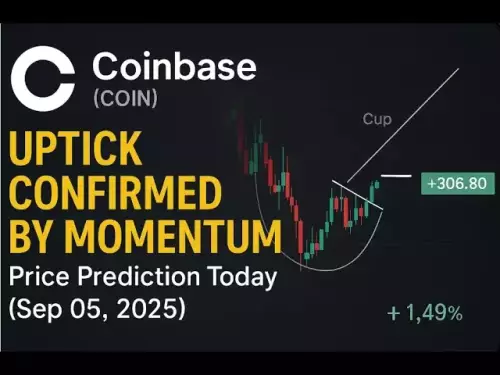-
 Bitcoin
Bitcoin $111400
1.19% -
 Ethereum
Ethereum $4330
1.06% -
 XRP
XRP $2.851
1.74% -
 Tether USDt
Tether USDt $1.000
0.00% -
 BNB
BNB $851.3
0.83% -
 Solana
Solana $205.5
0.99% -
 USDC
USDC $0.0000
0.00% -
 Dogecoin
Dogecoin $0.2167
2.37% -
 TRON
TRON $0.3325
-0.67% -
 Cardano
Cardano $0.8354
3.62% -
 Hyperliquid
Hyperliquid $46.90
5.09% -
 Chainlink
Chainlink $22.43
0.60% -
 Ethena USDe
Ethena USDe $1.001
-0.01% -
 Bitcoin Cash
Bitcoin Cash $613.8
4.60% -
 Sui
Sui $3.400
4.37% -
 Stellar
Stellar $0.3603
2.19% -
 Avalanche
Avalanche $24.45
0.44% -
 Hedera
Hedera $0.2203
3.90% -
 Cronos
Cronos $0.2672
0.45% -
 UNUS SED LEO
UNUS SED LEO $9.533
0.10% -
 Litecoin
Litecoin $113.1
2.80% -
 Toncoin
Toncoin $3.104
0.11% -
 Shiba Inu
Shiba Inu $0.00001246
3.18% -
 Polkadot
Polkadot $3.827
2.06% -
 Uniswap
Uniswap $9.436
2.42% -
 Dai
Dai $0.0000
0.01% -
 Monero
Monero $266.1
-0.66% -
 Ethena
Ethena $0.6788
4.52% -
 Aave
Aave $305.0
-0.98% -
 World Liberty Financial
World Liberty Financial $0.1830
-2.70%
How to calculate liquidation price on Binance Futures?
Binance Futures' liquidation price is the point where your position is auto-closed to prevent further losses, influenced by entry price, leverage, position size, and maintenance margin.
Sep 05, 2025 at 07:37 pm
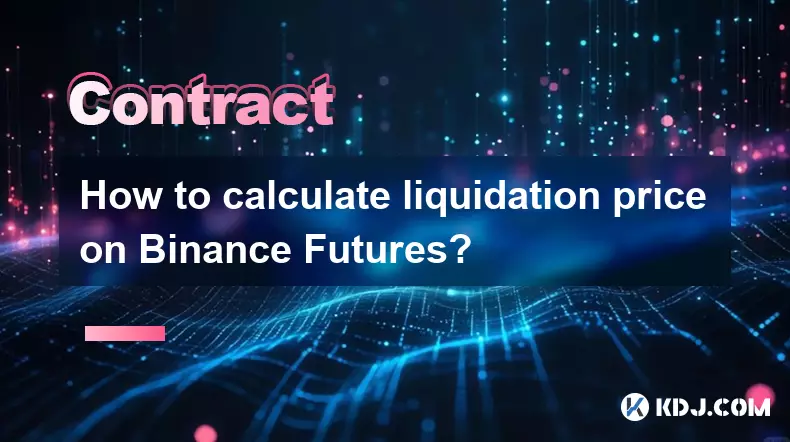
Understanding Liquidation Price in Binance Futures
1. The liquidation price is the market price at which a trader’s position is automatically closed by the exchange to prevent further losses. This mechanism protects both the trader and the exchange from negative equity. On Binance Futures, every open position has a liquidation price calculated based on several variables including entry price, leverage, position size, and maintenance margin.
2. When trading with leverage, even small price movements can significantly impact the margin balance. If the price of the asset moves against the position and the remaining margin falls below the required maintenance margin, the system triggers liquidation. This price point is dynamically updated as market conditions change and funding fees are applied.
3. Binance uses a tiered margin system for different contract types and sizes, which affects how liquidation prices are computed. Larger positions may fall into higher tiers with different maintenance margin rates, altering the liquidation threshold. Traders must be aware of these tiers to accurately estimate their risk exposure.
Key Variables in Liquidation Price Calculation
1. Entry price is the average price at which the position was opened. It serves as the baseline for calculating unrealized profit or loss. A deviation from this price directly influences the margin ratio and brings the position closer to or further from liquidation.
2. Leverage determines the amount of borrowed funds used to open a position. Higher leverage reduces the required initial margin, making the position more sensitive to price changes. For example, a 50x leverage position will have a much narrower buffer against adverse price moves than a 10x position.
3. Position size, measured in contracts or quote currency, affects the total margin commitment. Larger positions require more margin and are subject to higher maintenance requirements, which in turn impacts the liquidation price.
4. Maintenance margin is the minimum amount of margin needed to keep a position open. It is a percentage of the position value and varies by asset and size. This value is subtracted from the wallet balance to determine the available buffer before liquidation occurs.
Calculating Long and Short Liquidation Prices
1. For long positions, the liquidation price is generally below the entry price. It is calculated by taking the entry price and subtracting the margin buffer divided by the position size. As losses accumulate, the available margin decreases until it reaches the maintenance threshold.
2. For short positions, the liquidation price is above the entry price. The formula adjusts by adding the margin buffer to the entry level. Any upward movement in the asset price reduces the margin balance, bringing the position closer to liquidation.
3. The exact formula differs slightly between isolated and cross-margin modes. In isolated margin, the liquidation price depends only on the margin allocated to that specific position. In cross-margin mode, the entire wallet balance contributes to margin support, potentially pushing the liquidation price further from the current market level.
4. Binance provides a built-in liquidation price indicator in the futures interface. While this offers convenience, traders should understand the underlying math to verify accuracy, especially during high volatility when price slippage or funding adjustments may affect the actual trigger point.
Risk Management Around Liquidation
1. Monitoring the distance between the current price and liquidation price is crucial. A narrow gap indicates high risk, particularly in volatile markets. Traders can adjust their position size or add margin to widen this buffer and reduce the chance of forced closure.
2. Using stop-loss orders can help avoid reaching the liquidation price. While not a substitute for proper margin management, stop-losses allow traders to exit positions at predefined levels, maintaining control over risk.
3. Over-leveraging is a common cause of premature liquidations. New traders often underestimate how quickly adverse moves can deplete margin. Adopting conservative leverage, even when higher options are available, increases the resilience of a position.
4. Funding rates in perpetual contracts can gradually erode margin over time, especially in strong trending markets. Long positions in a high-funding environment may face downward pressure on equity, indirectly affecting the liquidation threshold.
Frequently Asked Questions
What happens when a position gets liquidated?When liquidation occurs, Binance automatically closes the position at the prevailing market price. The remaining margin, if any, is returned to the wallet after deducting losses. In extreme cases, insurance fund coverage may apply to prevent negative balances.
Can I adjust my liquidation price after opening a position?Yes, in isolated margin mode, adding more margin to the position lowers the leverage ratio and pushes the liquidation price further away from the current market price. Reducing position size has a similar effect.
Why does my liquidation price change even when the market is flat?The liquidation price can shift due to funding fee deductions, changes in mark price, or adjustments in maintenance margin rates based on position size tiers. These factors are updated in real time, even without price movement.
Does Binance warn me before liquidation?Binance displays the current margin ratio and liquidation price in the futures interface. When the margin ratio approaches the maintenance level, margin call warnings may appear. However, no automatic notification is sent unless enabled through custom alerts.
Disclaimer:info@kdj.com
The information provided is not trading advice. kdj.com does not assume any responsibility for any investments made based on the information provided in this article. Cryptocurrencies are highly volatile and it is highly recommended that you invest with caution after thorough research!
If you believe that the content used on this website infringes your copyright, please contact us immediately (info@kdj.com) and we will delete it promptly.
- Solana's Tug-of-War: Bulls vs. Sellers – Who's Winning?
- 2025-09-06 02:45:16
- Crypto Tokens, SEC Regulation, and Market Explosion: Navigating the Web3 Revolution
- 2025-09-06 02:45:16
- Crypto Coins in 2025: Spotting the Next Big Investment
- 2025-09-06 03:05:15
- Altcoins: Profit Potential or High-Risk Gamble?
- 2025-09-06 03:05:15
- Ethereum Price, PEPE Coin, and Layer 2s: What's the Hype?
- 2025-09-06 03:16:35
- Web3 Ghostwriter Fly You Fools Soars: From Berlin Hackathon to Entrepreneur Awards
- 2025-09-06 02:30:13
Related knowledge

What to do if you are about to be liquidated?
Sep 06,2025 at 01:00am
Understanding Liquidation in the Crypto Market1. Liquidation occurs when a trader’s margin balance falls below the required maintenance margin, forcin...
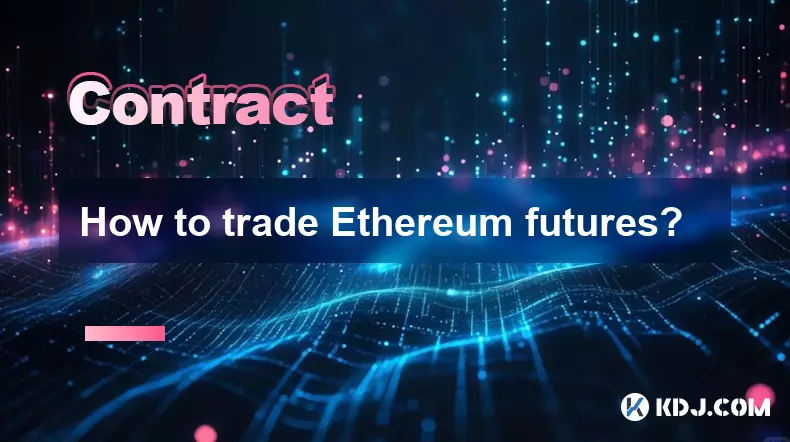
How to trade Ethereum futures?
Sep 05,2025 at 03:54pm
Understanding Ethereum Futures Basics1. Ethereum futures are financial derivatives that allow traders to speculate on the future price of ETH without ...
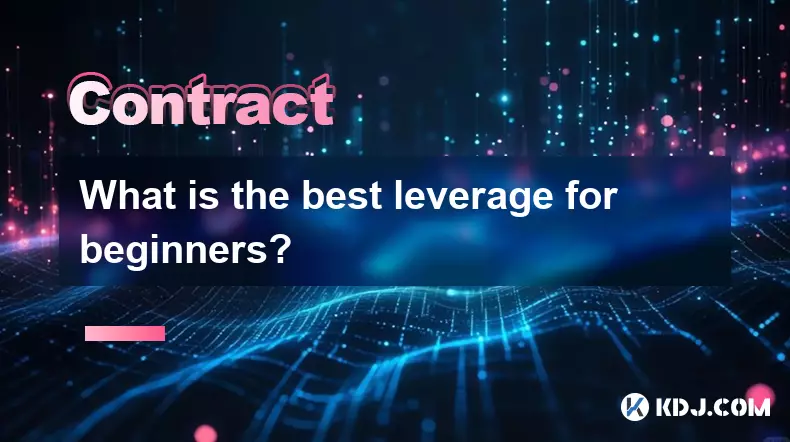
What is the best leverage for beginners?
Sep 06,2025 at 02:37am
Understanding Leverage in Cryptocurrency Trading1. Leverage allows traders to borrow funds to increase their position size beyond their available capi...
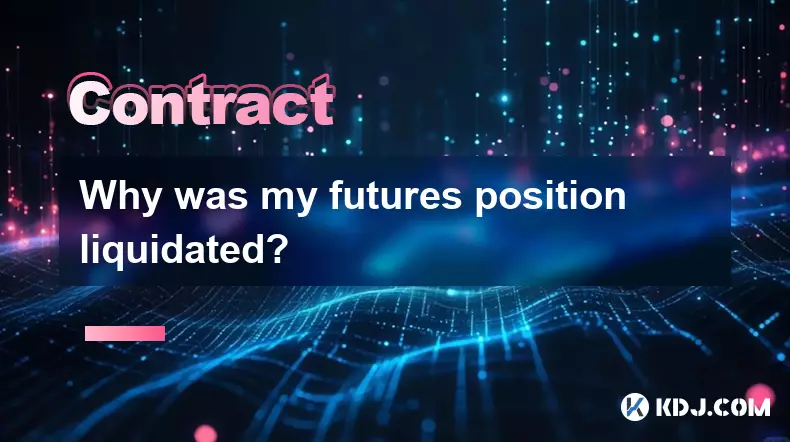
Why was my futures position liquidated?
Sep 06,2025 at 12:18am
Decentralized Exchanges and Their Impact on Crypto Trading1. Decentralized exchanges (DEXs) have reshaped the way users interact with digital assets b...
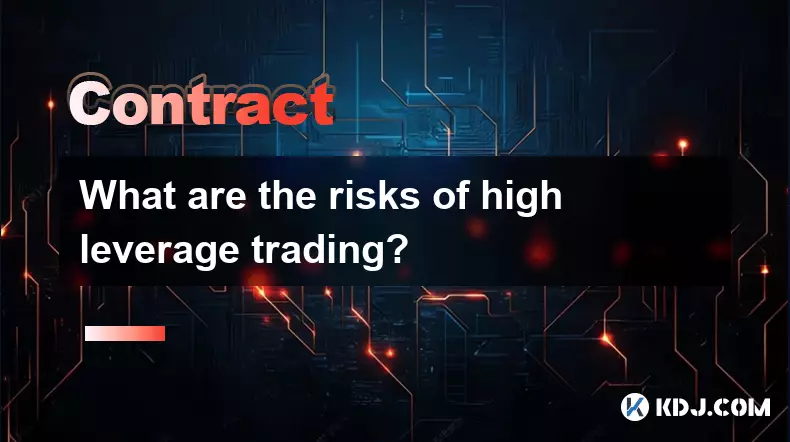
What are the risks of high leverage trading?
Sep 06,2025 at 01:55am
Risks Associated with High Leverage in Crypto Trading1. Leverage amplifies both gains and losses, but in volatile markets like cryptocurrency, the dow...
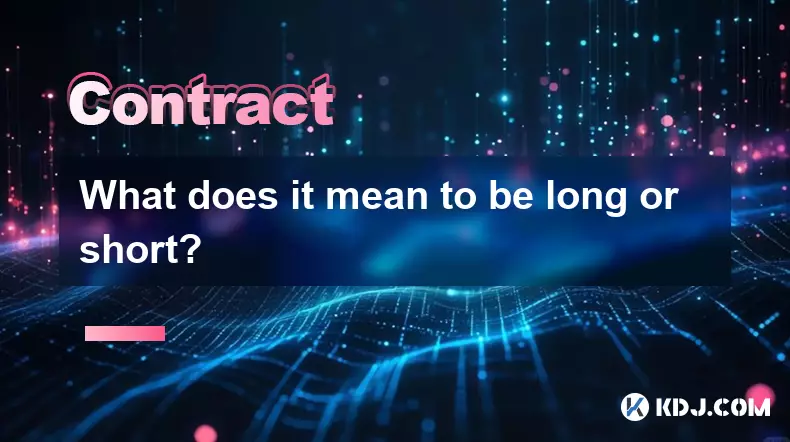
What does it mean to be long or short?
Sep 05,2025 at 02:54pm
Understanding Long Positions in the Crypto Market1. Taking a long position means an investor expects the price of a cryptocurrency to rise over time. ...

What to do if you are about to be liquidated?
Sep 06,2025 at 01:00am
Understanding Liquidation in the Crypto Market1. Liquidation occurs when a trader’s margin balance falls below the required maintenance margin, forcin...

How to trade Ethereum futures?
Sep 05,2025 at 03:54pm
Understanding Ethereum Futures Basics1. Ethereum futures are financial derivatives that allow traders to speculate on the future price of ETH without ...

What is the best leverage for beginners?
Sep 06,2025 at 02:37am
Understanding Leverage in Cryptocurrency Trading1. Leverage allows traders to borrow funds to increase their position size beyond their available capi...

Why was my futures position liquidated?
Sep 06,2025 at 12:18am
Decentralized Exchanges and Their Impact on Crypto Trading1. Decentralized exchanges (DEXs) have reshaped the way users interact with digital assets b...

What are the risks of high leverage trading?
Sep 06,2025 at 01:55am
Risks Associated with High Leverage in Crypto Trading1. Leverage amplifies both gains and losses, but in volatile markets like cryptocurrency, the dow...

What does it mean to be long or short?
Sep 05,2025 at 02:54pm
Understanding Long Positions in the Crypto Market1. Taking a long position means an investor expects the price of a cryptocurrency to rise over time. ...
See all articles

























